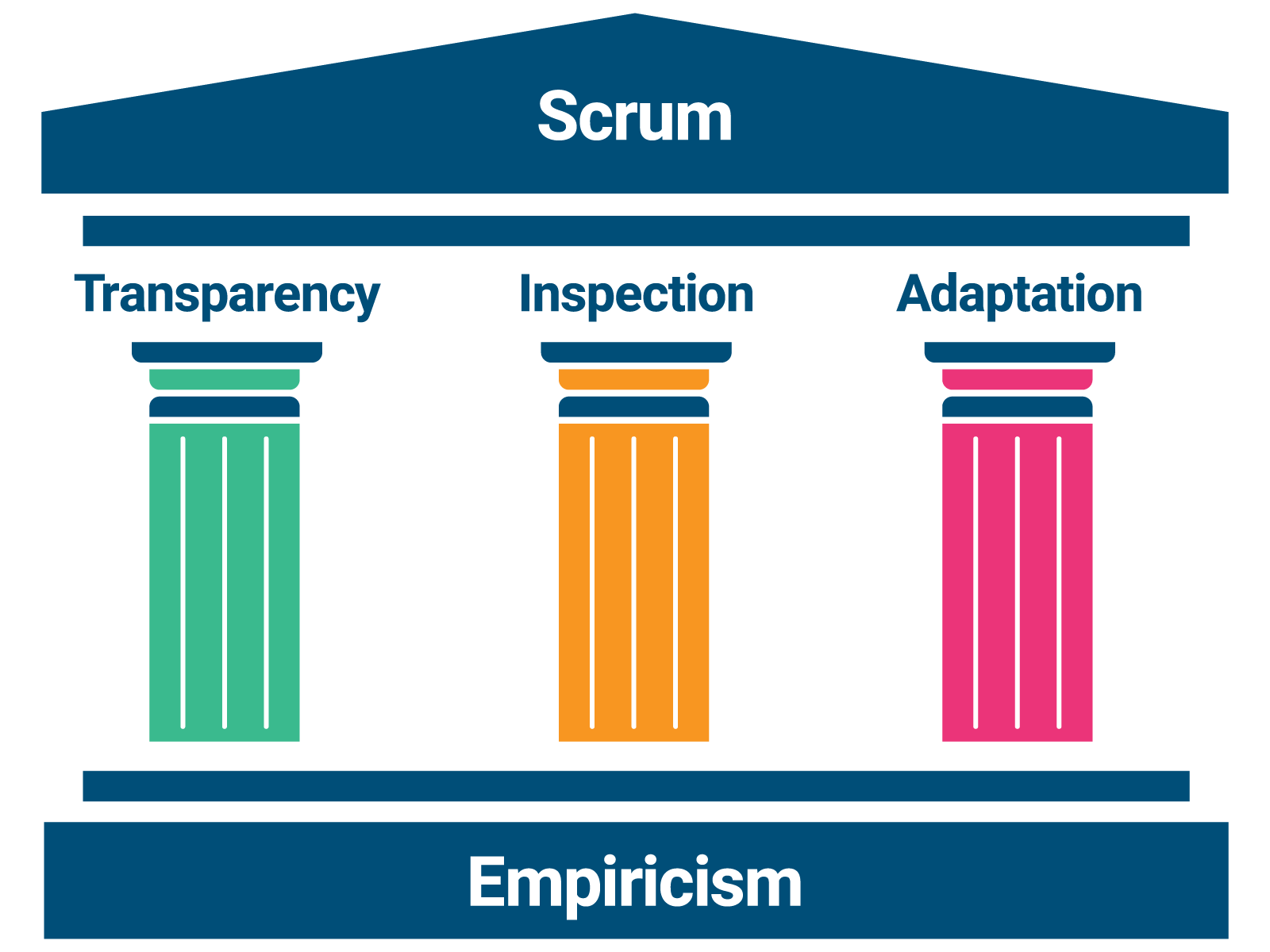Every day at Imaginuity, our focus is on delivering exceptional results for our clients efficiently, on time and on budget. That’s why we have gone all in on using the Agile Scrum methodology as our framework for developing complex technology projects like websites.
In this post, we’ll explore the basics of Scrum, how its principles help us achieve transformative outcomes and why this approach has become an essential part of our operations.
Scrum is one of several different frameworks within the Agile project management methodology. Let’s start with Agile. The Agile approach involves breaking a complex project into smaller phases and emphasizes continuous collaboration and improvement. Throughout a project’s development, Agile teams follow a continuous cycle of planning, executing, and evaluating.
Agile is different from the Waterfall development methodology in that Agile is iterative and incremental and project development happens in short “Sprints.” Waterfall, on the other hand, is more rigid with the full project being delivered at the end of the development cycle rather than in increments.
There are four Agile “manifestos,” or foundational values or beliefs,
that drive its methodology:

Although there are several different Agile project management philosophies, Scrum is best suited for our needs due to the way it provides a structured approach to implementing Agile principles in practice.
Within Scrum, there are two primary concepts that contribute to the effectiveness of the framework: “empiricism” and “lean thinking.”
Empiricism is concerned with the importance of making decisions based on observation and experience rather than relying on guesses and assumptions. Progress is measured based on what the team is seeing and feedback loops throughout the project.
Within empiricism, there are three pillars:

■ Transparency ensures that all team members have access to the same information, which makes communication, collaboration and decision-making more effective. It also helps the team be clear about limitations, capacity, and the best ways to get work done.
■ Inspection accounts for regular check-ins to determine progress and identify risks, issues, or opportunities for improvement.
■ Adaptation allows for changes and adjustments to be made to improve the team’s approach, processes, or deliverables.
The second concept, lean thinking, focuses on maximizing value while minimizing waste. Like Toyota’s famous production process, lean thinking aims to streamline processes, eliminate non-value-added activities, and create more value for the client. By incorporating lean thinking into Scrum, our teams create a more efficient and effective development process, resulting in faster delivery, reduced waste, and improved client satisfaction.

Both empiricism and lean thinking play vital roles in the Scrum methodology, enabling us to embrace transparency, regular review, flexibility, and continuous improvement, while also optimizing value delivery. Overall, there are eight key components and principles of the Scrum methodology, but for the sake of brevity, we will highlight those of most significance.
Four important components and principles of the Scrum methodology:
- Sprint planning: A Sprint is a time-bound (for us, typically ten days) period during which time the team produces an increment of the project. During Sprint planning, the team determines which items from the project’s backlog will be worked on during that Sprint. The team determines goals and selects high-priority items to be completed during the Sprint.
- Daily scrum: The daily Scrum or daily stand-up is a brief meeting among all team members where we report on what was accomplished since the last stand-up and discuss any barriers to further progress or needs.
- Sprint review or demo: At the end of each Sprint, we present the finished work or a demo to agency and client stakeholders, gather feedback, and determine what to take on next.
- Sprint retrospective: Following the Sprint review, we reflect on the Sprint, determine what can be improved, and implement action items to enhance future Sprints.
With all of this going on, team leadership and coaching are critical. This is where the Scrum Master comes in. The Scrum Master is an expert on Scrum theory, principles, and practices, and helps the team work effectively and efficiently to create a high-value product. It’s important to note that the Scrum Master does not have a managerial role or authority over the team. Instead, they serve as a servant-leader, enabling the team to self-organize and achieve project goals. We currently have two Scrum Masters on our staff.
Taking an iterative approach to the development of complex projects like websites provides a high degree of value to Imaginuity and our clients. Following Scrum principles enables our teams to work efficiently, respond quickly to changing requirements, minimize risks and deliver superior results to our clients, incrementally throughout each project.